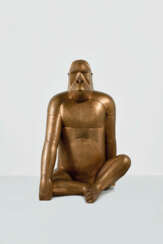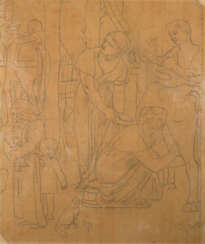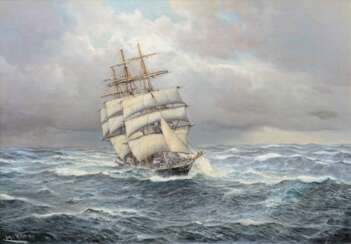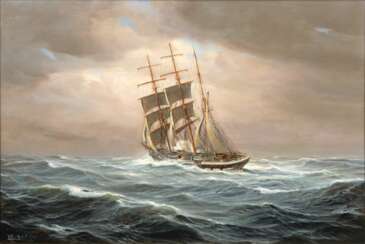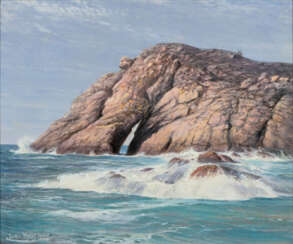anne orden



Paul Cézanne, a French Post-Impressionist painter, was pivotal in shaping the transition from 19th-century art to a new, revolutionary approach in the 20th century. His unique and exploratory brushstrokes, utilizing planes of color to form complex fields, made his work instantly recognizable and influential in the development of Cubism.
Cézanne’s early works, influenced by Romanticism and Realism, evolved into a groundbreaking artistic language. He challenged traditional perspective and academic art rules, focusing on objects' structural aspects and art's formal qualities. This approach led to a renewed emphasis on impressionistic color space and modulation principles.
His most notable works, like “Mont Sainte-Victoire,” “The Card Players,” and “The Bathers,” display his mastery in creating depth and dimension through color gradations. These paintings, initially met with skepticism, eventually cemented Cézanne’s reputation as a pioneering artist. His exhibitions, particularly the one-man show by dealer Ambroise Vollard in 1895, played a critical role in his recognition.
Cézanne’s impact on art history is profound, with greats like Henri Matisse and Pablo Picasso acknowledging him as a significant influence. His exploration of geometric forms and innovative use of light and color laid the groundwork for subsequent movements, particularly Cubism.
For collectors and art experts, Cézanne's works are more than just paintings; they are pivotal chapters in the narrative of modern art. His creations, bridging Impressionism and Cubism, continue to inspire and challenge contemporary artists.
To stay updated on new product sales and auction events related to Paul Cézanne, sign up for our updates. This subscription ensures you remain informed about the latest developments in the world of this revolutionary artist.


Anne Vallayer-Coster was a renowned French artist, celebrated for her exceptional still-life paintings that captivated 18th-century art enthusiasts, including the French Queen Marie Antoinette. Born into an artistic family in 1744, Vallayer-Coster's talent was evident early on, leading to her unanimous election into the prestigious Académie Royale at just 26 years old. Her works, characterized by their vibrant color, meticulous detail, and textural precision, often depicted bowls of fruit, game, shells, and flowers, showcasing the opulence of French aristocracy before the Revolution.
Vallayer-Coster's career was notable not only for her artistic achievements but also for her ability to navigate the male-dominated art world of her time. Despite the societal constraints on women artists, she gained the patronage of influential figures like Marie Antoinette and was one of the few women admitted to the Royal Academy of Painting and Sculpture. Her work received critical acclaim at the Salon, where she exhibited regularly from 1771 until 1817, and her still-lifes were praised for their sensuality, illusionistic perfection, and the rich, indulgent luxury they portrayed.
One of Vallayer-Coster's most ambitious works, Still Life with Flowers in an Alabaster Vase and Fruit (1783), exemplifies her unparalleled skill in capturing the soft textures of flowers and their harmonious arrangement. This masterpiece was hailed as such at the Salon of 1783 and is considered by Vallayer-Coster herself as her finest painting. Lost for nearly two centuries, it was recently rediscovered in an almost pristine state and is now part of the National Gallery of Art's collection, highlighting Vallayer-Coster's significant contributions to European art history.
Throughout her career, Vallayer-Coster produced more than 120 still lifes, always with a distinctive brilliance in color, earning her a place among the elite artists of her time. Despite facing challenges during the French Revolution due to her close association with the monarchy, she continued to exhibit her work and contribute to the art world until her death in 1818.
For collectors and experts in art and antiques, Anne Vallayer-Coster's legacy is a testament to her skill, resilience, and the impact of her work on the history of art. To stay updated on new product sales and auction events related to Anne Vallayer-Coster, sign up for updates that focus solely on this exceptional artist's contributions to the art world.


François-Xavier Lalanne was a French painter and sculptor. He studied sculpture, drawing and painting at the Académie Julian. Since the 1960s he has worked as a couple with his wife Claude Lalanne.


Pierre Cécile Puvis de Chavannes, a prominent French painter, was known as "the painter for France." His influential mural paintings showcased a classicizing style, often referencing visions of Hellenistic Greece.
Puvis received numerous commissions for public and private institutions across France, with significant works in Amiens, Marseille, Lyon, Poitiers, and Paris. His success as a 'painter for France' stemmed from his ability to appeal to various ideologies of the time. In addition to murals, Puvis created easel paintings, some of which can be found in galleries worldwide. Despite his significance, he was not fully appreciated during his lifetime, and his work remains a subject of ongoing art criticism.


Johannes Janssonius was a Dutch cartographer, printer and publisher.
In 1616 Janssonius created his first maps of France and Italy, and every year he expanded and improved their publishing. The so-called "Great Atlas" already numbered eleven volumes. The editions were printed in Dutch, Latin, French and German.


Johannes Holst was a German sailor and self-taught painter who specialised in seascapes.


Johannes Holst was a German sailor and self-taught painter who specialised in seascapes.


Johannes Holst was a German sailor and self-taught painter who specialised in seascapes.


Johannes Holst was a German sailor and self-taught painter who specialised in seascapes.


Johannes Holst was a German sailor and self-taught painter who specialised in seascapes.


Johannes Holst was a German sailor and self-taught painter who specialised in seascapes.


Johannes Holst was a German sailor and self-taught painter who specialised in seascapes.


Johannes Holst was a German sailor and self-taught painter who specialised in seascapes.


Johannes Holst was a German sailor and self-taught painter who specialised in seascapes.


Johannes Holst was a German sailor and self-taught painter who specialised in seascapes.


Johannes Holst was a German sailor and self-taught painter who specialised in seascapes.


Johannes Holst was a German sailor and self-taught painter who specialised in seascapes.


Johannes Janssonius was a Dutch cartographer, printer and publisher.
In 1616 Janssonius created his first maps of France and Italy, and every year he expanded and improved their publishing. The so-called "Great Atlas" already numbered eleven volumes. The editions were printed in Dutch, Latin, French and German.


Marianne "Manni" Sayn-Wittgenstein-Sayn, real name Maria Anna Sayn-Wittgenstein-Sayn, née Mayr-Melnhof, is a dowager princess and Austrian photographer.
On her mother's side, Maria is a direct descendant of Empress Maria Theresa, which has opened all doors of aristocracy, business, politics and art to her. She was encouraged to take up photography by Lilly Palmer and Karl Lagerfeld after her husband died in 1962. Soon she was working with Frau im Spiegel magazine, then Bunte and Vogue.
Wherever she was - skiing in St. Moritz, on a yacht, at parties and weddings, in Europe and in America, Maria photographed everyone around her: Onassis and Maria Callas, Prince Charles, Gianni Agnelli, Romy Schneider, Luciano Pavarotti, the Queen Mother or King Juan Carlos. During her lifetime she photographed many world celebrities. By her centenary, Maria had more than 300,000 of her photographs in her archive.
Maria never took immodest or offensive photos of her friends. Princess Caroline of Monaco once joked, "You're not a paparazzi, you're a mamarazza," thus the nickname Marianne Sayn-Wittgenstein-Sayn was born.


Johannes Holst was a German sailor and self-taught painter who specialised in seascapes.


Johannes Holst was a German sailor and self-taught painter who specialised in seascapes.


Johannes Holst was a German sailor and self-taught painter who specialised in seascapes.


Johannes Holst was a German sailor and self-taught painter who specialised in seascapes.


Johannes Holst was a German sailor and self-taught painter who specialised in seascapes.


Johannes Holst was a German sailor and self-taught painter who specialised in seascapes.


Johannes Holst was a German sailor and self-taught painter who specialised in seascapes.


Johannes Holst was a German sailor and self-taught painter who specialised in seascapes.


Johannes Holst was a German sailor and self-taught painter who specialised in seascapes.











